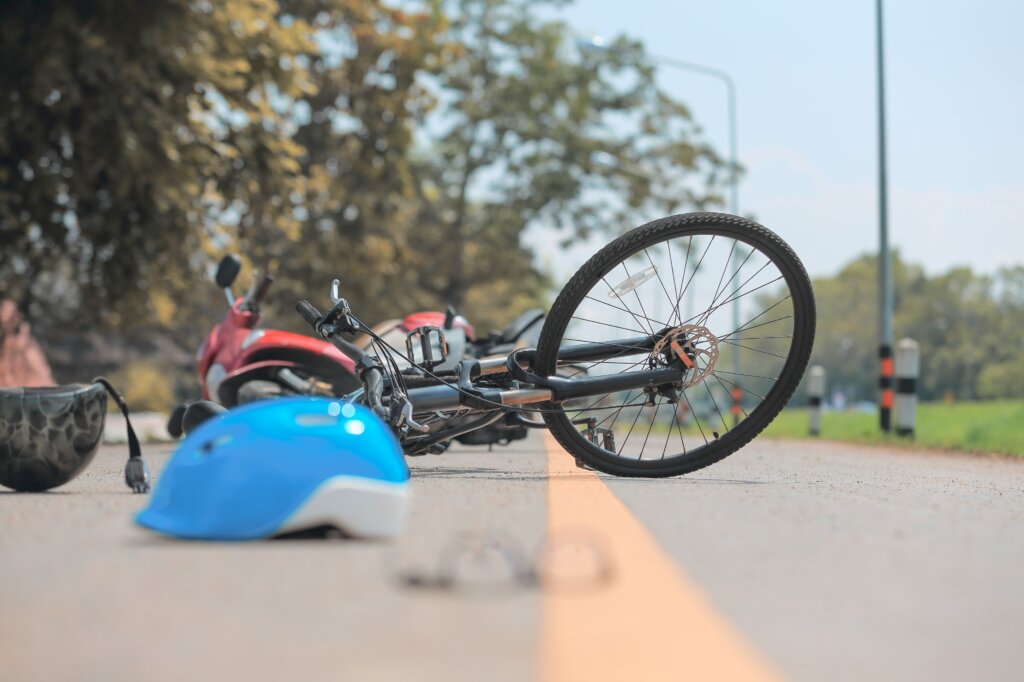
Every road user has an equal right to travel safely. In California, where road accidents involving bicyclists have led to 100 fatalities and over 10,000 injuries, understanding the appropriate steps after a bike crash is essential. This article aims to elucidate key points that can guide individuals in taking the necessary actions. Before delving into post-bike crash considerations, it is imperative to familiarize oneself with fundamental laws to prevent avoidable accidents and penalties.
- Understanding California’s Cycling Helmet Regulation:
To prevent unnecessary accidents and fines, individuals must be aware of California’s cycling helmet regulation. The regulation can be dissected into its components:
- Minimum Age to Wear a Helmet:
Cyclists aged eighteen or older have the option not to wear a helmet. However, those under eighteen are legally required to wear a certified and properly fitted bicycle helmet.
- Under-18s Are Required to Wear Helmets:
This legislation applies to riders and any passengers under the age of eighteen, encompassing various environments such as roadways, public trails, and bike lanes.
- Private Property Exemption:
Riding on private land exempts cyclists under eighteen from the helmet law. Violating this law incurs a $25 fine for those under eighteen.
Helmets’ Effect on Safety:
Statistically, properly worn bicycle helmets have been proven to save lives and prevent injuries.
- Adults’ Freedom of Choice:
Individuals aged eighteen and above have the freedom to choose whether to wear a helmet while cycling. Recognizing both statistical data supporting helmet use for safety and the ongoing discussion within the cycling community regarding helmet choice is crucial.
Common Reasons for Bicycle Accidents:
- Hit and run
- Dooring
- Unsafe driving
- Collision with e-bikes
- Crash due to unrestrained animals
- Poor road conditions
- Collision with pedestrians
Essential Steps After a Bike Accident:
- Prioritize Safety:
Assess injuries to yourself and others involved immediately after an accident. Quick thinking is emphasized for safety, as stated by James McNulty-Ackroyd, Clinical Projects Manager of St John Ambulance. If uninjured or with minor injuries, move promptly to safety on the side of the road. If a suspected bone fracture is present, keeping the injured area still is crucial.
- Post-Collision Actions:
Certain actions are crucial in the event of a traffic collision involving a wounded cyclist and concerned bystanders, including filing necessary reports:
Reporting Obligation: Notify the police “as soon as reasonably practicable,” but no later than 24 hours, if anyone is injured in a road traffic collision.
Severity of Injuries and Reporting: Call for an ambulance in cases of significant injuries with restricted movement or severe bleeding. Emergency services can notify the police directly in such cases.
Reporting Non-Serious Injuries: Report an event with non-serious injuries online or by calling the non-urgent line at 101. If unsure about the severity of injuries, attending an ER or urgent care center is advised.
Stop Riding After an Accident: Cease riding immediately following a bicycle incident, even if both rider and bike appear undamaged. Thoroughly check the bike frame for damage before resuming riding.
- Maintain Calmness:
Staying calm is essential for problem-solving. Assess injuries, understand their severity, and check for signs of head injury. Seek medical attention promptly if symptoms of concussion or headaches arise.
- Gather Details of Other Parties:
Collect details of the other party involved, including contact number, vehicle model or registration number, insurance details, and witnesses. Document the scene with photos and videos. If the other party is unwilling to provide details, note the time and location details for police assistance.
- Conclusion:
In the aftermath of an accident, taking care of matters alone is not advisable. Seeking a medical checkup for effective recovery is crucial, as internal injuries may not be immediately apparent. Riders bear the responsibility of ensuring safe cycling practices to avoid becoming the cause of a collision.”
Back to blog